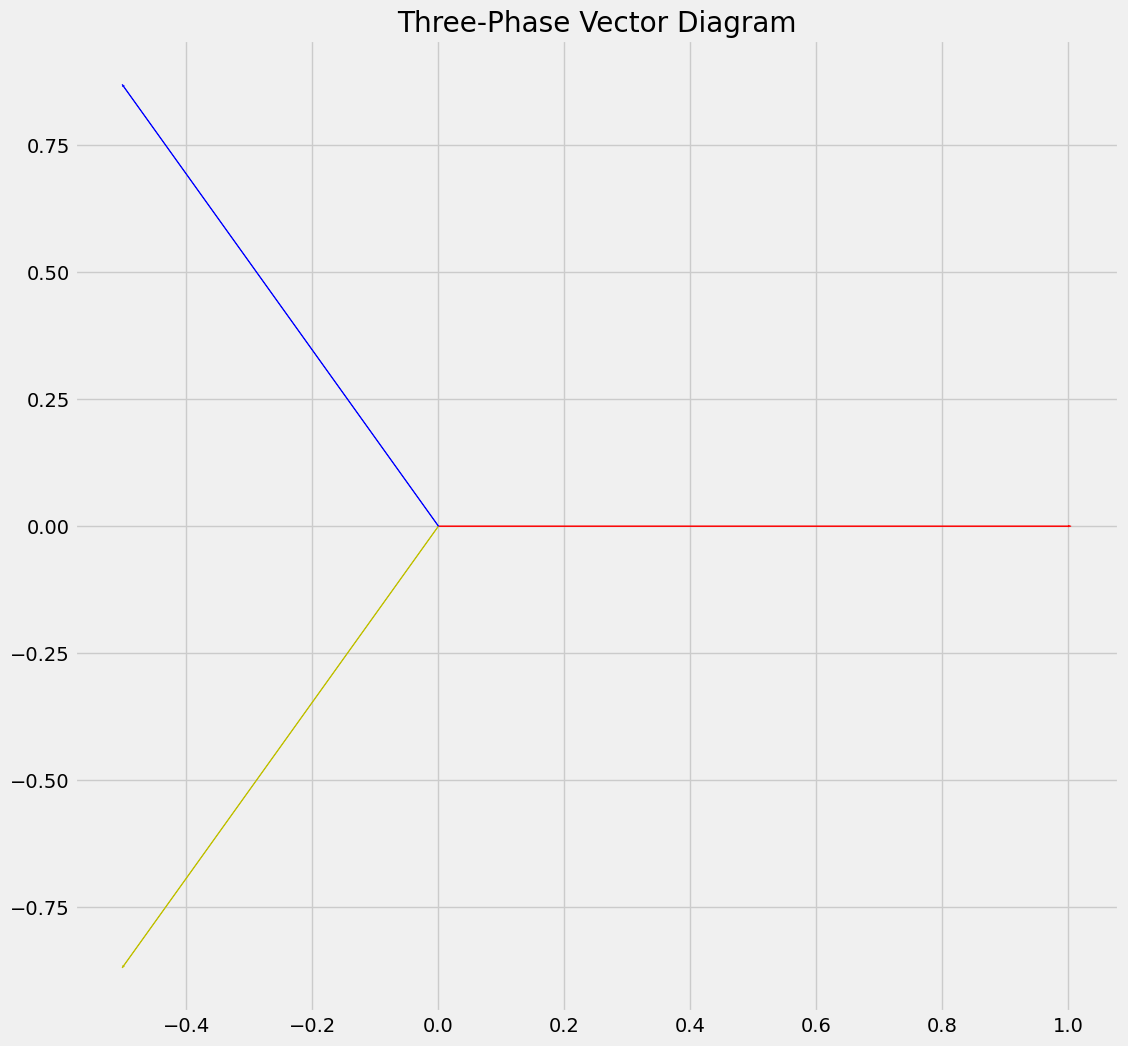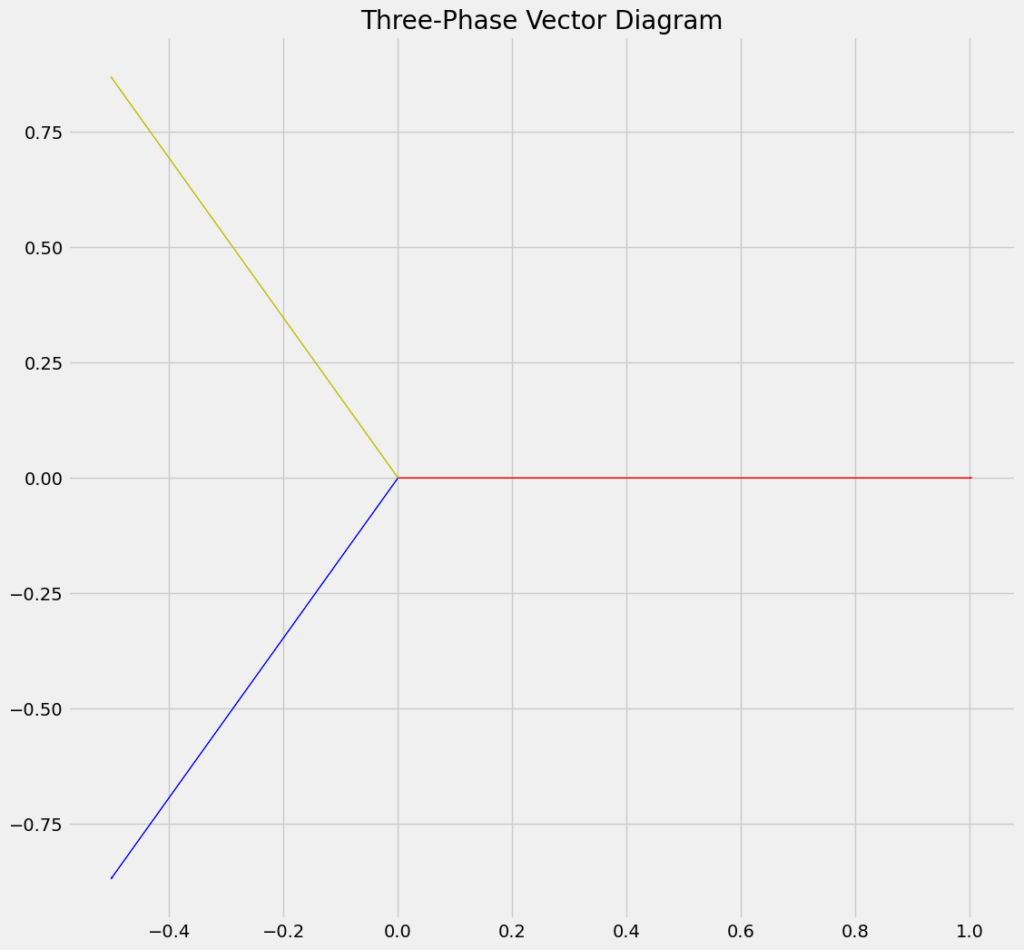With our comprehensive Negative Phase Sequence Consulting Services, we deliver expert analysis and innovative solutions to effectively manage negative sequence currents in three-phase electrical systems. Our services are designed to identify and address issues caused by unbalanced loads, faults, and system abnormalities, ensuring system stability, reducing equipment wear, and significantly enhancing overall power quality. We provide tailored strategies, including advanced protection schemes and system optimization, to boost reliability and efficiency across electrical networks. Partner with us to achieve superior performance and long-term sustainability in your power systems.
Understanding Negative Phase Sequence
Negative sequence currents refer to unbalanced currents that occur in three-phase electrical systems.
In a balanced three-phase system, the currents in each of the three phases are equal in magnitude and have a phase difference of 120 degrees. However, certain network abnormalities can disrupt this balance, leading to negative sequence currents. These imbalances may result from single-phase faults (such as broken conductors or line-to-line faults), unbalanced loads, or the presence of unbalanced impedances. Understanding negative sequence currents is crucial for maintaining system stability and reliability.
Negative Phase Sequencing, therefore, represents a vector that rotates in a clockwise direction.
In a Positive (or “normal”) Sequence, the current flows through the three phases in the order of Phase A, Phase B, and Phase C. The colors Red, Yellow, and Blue represent this sequence, in the video and figure provided.

The vector diagram illustrates that Phase 1 is succeeded by Phase 2, which has a phase-shift angle of 120 degrees lagging Phase 1. In an equivalent manner, Phase 2 is succeeded by Phase 3, also with a phase-shift angle of 120 degrees.

Both the images above represent a perfect condition. Also see the video below.
Conversely, in a Negative Sequence scenario, the phase order is altered, with currents flowing in the sequence of Phase A (or 1), Phase C (or 3), and Phase B (or 2).
In the video and figure below, Blue, Yellow, and Red indicate it.

In this instance, Blue precedes Yellow, which in turn is followed by Red.

The video below demonstrates a three-phase voltage wave with a 6% voltage reduction in one phase and a 10% third harmonic disturbance across all three phases. Observe the Yellow and Blue Phases as they rise above the “standard” voltage levels.
Effects of Negative Sequencing
Negative sequence currents may adversely affect power system equipment and its operation. They can result in excessive heating of motors, generators, and transformers, potentially causing damage or shortening their lifespan. These currents can also induce mechanical stresses in rotating machinery, manifesting as vibrations and torque pulsations. Furthermore, negative sequence currents can be responsible for voltage dips, voltage imbalance, and elevated power losses within the system.
Heating and Overloading
The rise in temperature is attributed to negative sequence currents, which generate a rotating magnetic field counter to the standard direction, leading to extra losses and the consequent overheating of the equipment.
Voltage Imbalance
Negative sequence components can cause voltage imbalances across separate phases, impacting the supply’s quality and stability. Such imbalances may decrease system efficiency, elevate reactive power consumption, and impair motor performance. Additionally, severe voltage imbalances can trigger equipment malfunctions, light flickering, and voltage sags or swells.
Unwanted Torques and Vibrations
In rotating machinery like motors and generators, negative sequence currents produce extra torques that oppose the standard direction of rotation. This undesirable torque can lead to mechanical vibrations, heightened stress on bearings and shafts, and be harmful to the machine’s mechanical parts.
Loss of System Stability
Excessive negative sequence currents may result in voltage instability, voltage collapse, and potentially system-wide blackouts. The imbalance created by these currents can interfere with the standard functioning of protective relays, voltage regulators, and control systems, thereby endangering the system’s overall stability and reliability.
Interference with Protection Systems
Negative sequence currents may disrupt the functioning of protective relays and other safety devices. Unbalanced currents can lead to the improper operation or miscoordination of these relays, resulting in inefficient fault detection and insufficient fault isolation. Such issues can compromise the entire system’s protection and heighten the likelihood of extended power outages.
Detecting and Measuring Negative Sequence Current
The detection and measurement of negative sequence currents are crucial for the upkeep of an electrical system’s health. Specialized equipment, such as Power Quality Monitors, is utilized for this purpose. Additionally, there are devices available for permanent installation to monitor these currents.
Harmonic Content
The presence of negative sequences interacts with other currents in the system, generating higher harmonics that can cause torque pulses, overheating, and diminished efficiency.
Temporary Characteristics
Negative sequence currents may manifest intermittently or fluctuate, occurring over extended or brief periods.
Mitigating the Effects
Installation of protective relays and devices is a proactive measure to detect and counteract the effects of negative sequence currents. These systems are designed to monitor the magnitude and phase angle of the currents, enabling them to execute protective actions like tripping circuit breakers or sounding alarms, thereby preventing additional damage and addressing the imbalance.
Common measures to mitigate the effects of negative sequence currents include proper grounding and neutral protection, the use of negative sequence overcurrent relays, and the application of solid-state and microprocessor technology for enhanced generator protection.
Negative Sequence Current Protection Relays
Protective relays, tailored to detect and react to negative sequence currents, can be utilized. These relays track the current in each phase and assess the magnitudes and phase angles to pinpoint imbalances. Upon detecting excessive negative sequence currents, the relay will activate the corresponding circuit breakers to disconnect the fault or imbalance.
Differential Protection
Differential protection schemes are employed to detect faults and imbalances arising from negative sequence currents. By monitoring the currents entering and exiting a specific component, like a motor or transformer, differential relays can detect discrepancies and trigger protective measures.
Voltage-Based Protection
Negative sequence currents are linked to voltage imbalances. Protection schemes that rely on voltage can identify and react to unusual voltage conditions, signaling the existence of negative sequence currents. Voltage relays and monitors can be employed to observe phase voltages and initiate suitable protective actions when imbalances surpass set thresholds.
Generator and Motor Protection
Protection against negative sequence currents is crucial for generators and motors, which are highly vulnerable to the adverse effects of unbalanced conditions. Protection relays for generators and motors typically feature capabilities to identify negative sequence currents and trigger suitable protective measures, such as activating the circuit breaker or diminishing the output power.
System Grounding and Neutral Protection
Appropriate grounding and neutral protection are crucial for mitigating negative sequence currents. Implementing effective grounding methods, such as solid or low-impedance grounding, can restrict the spread of negative sequence currents and diminish their impact. Moreover, the use of neutral grounding apparatuses, such as resistors or reactors, can aid in the detection and restriction of negative sequence currents in the event of ground faults.
System Analysis and Maintenance
Conducting regular system analyses, such as load flow studies and fault analysis, is key to identifying potential sources of negative sequence currents. Through a thorough understanding of system characteristics and vigilant operational monitoring, one can implement suitable maintenance and corrective measures to reduce the incidence of unbalanced conditions and negative sequence currents.
Consulting Service
The detection and measurement of negative sequence currents and voltages necessitate advanced instrumentation and constitute a specialized service. Click here to order this service.
Newsletter
Our newsletters aim to enlighten our audience about current trends and events. We strive to distribute a newsletter at most once a week, but the frequency may vary to avoid inundating our website visitors with irrelevant content.
The most recent newsletters will be dispatched via email to all individuals on our mailing list and will also be accessible under this menu section.